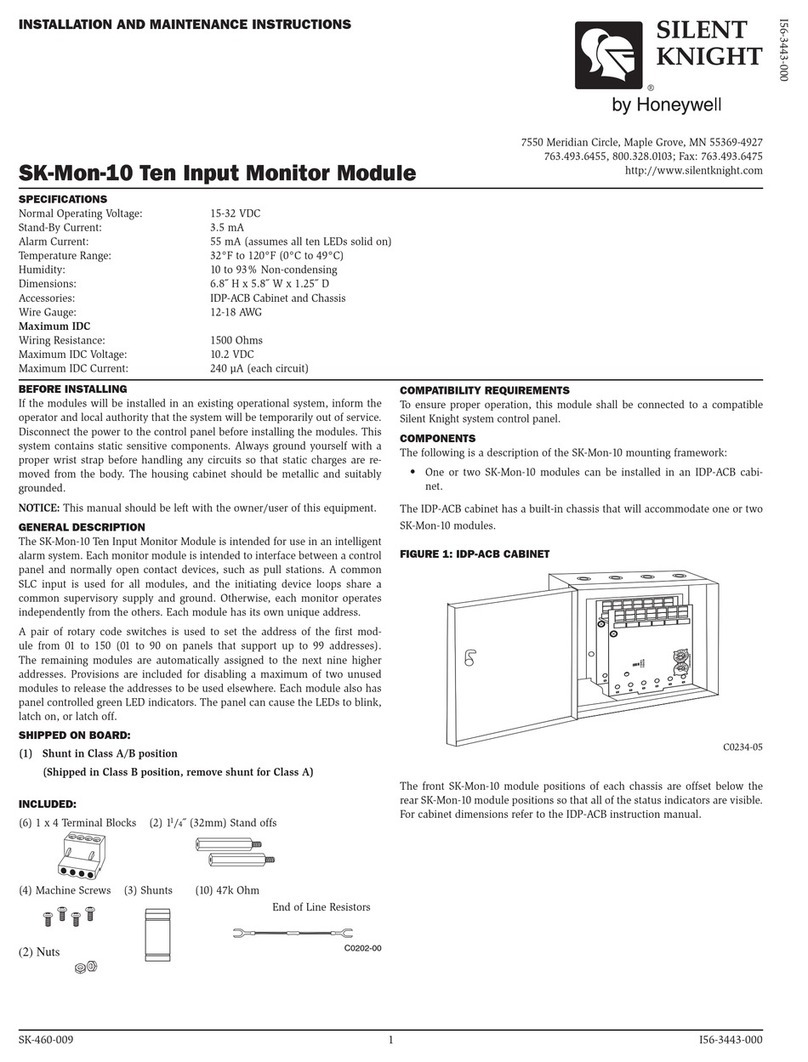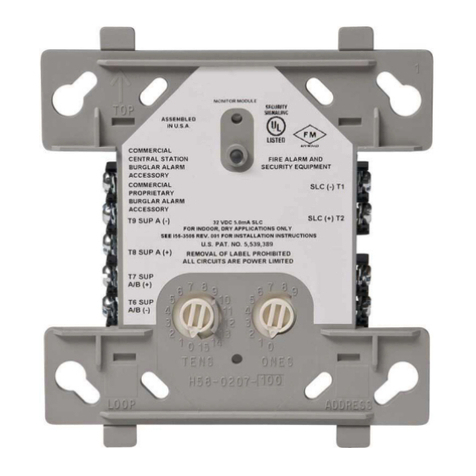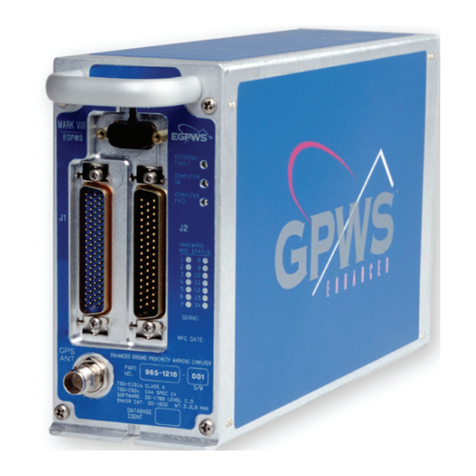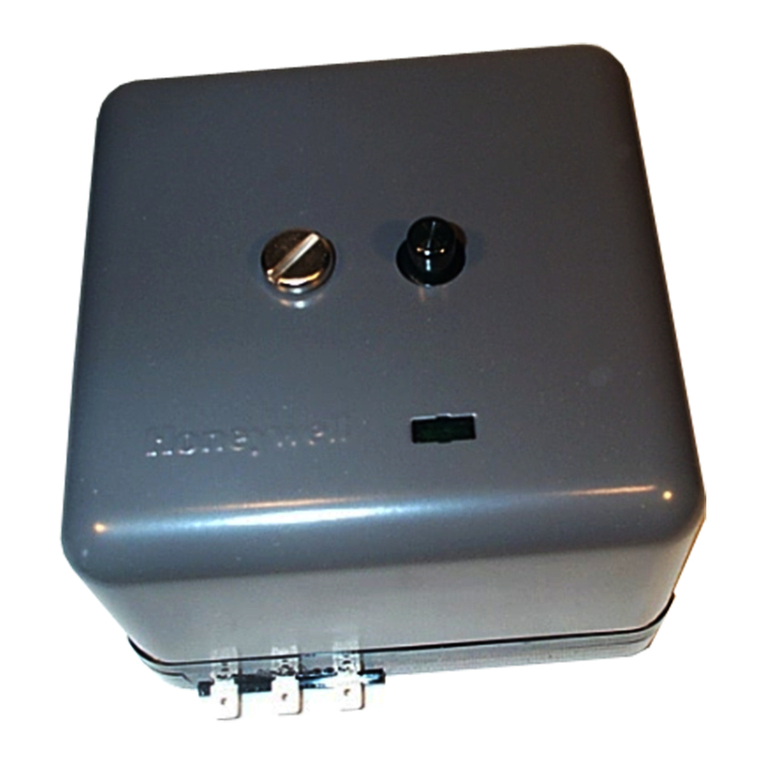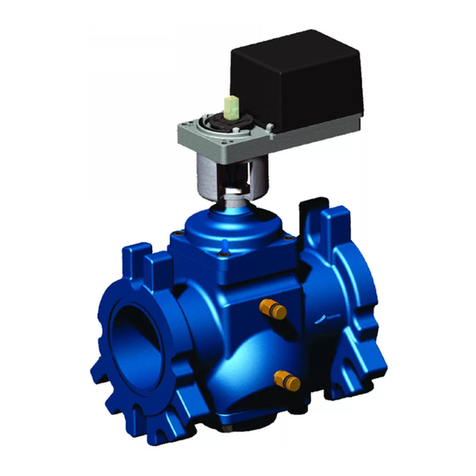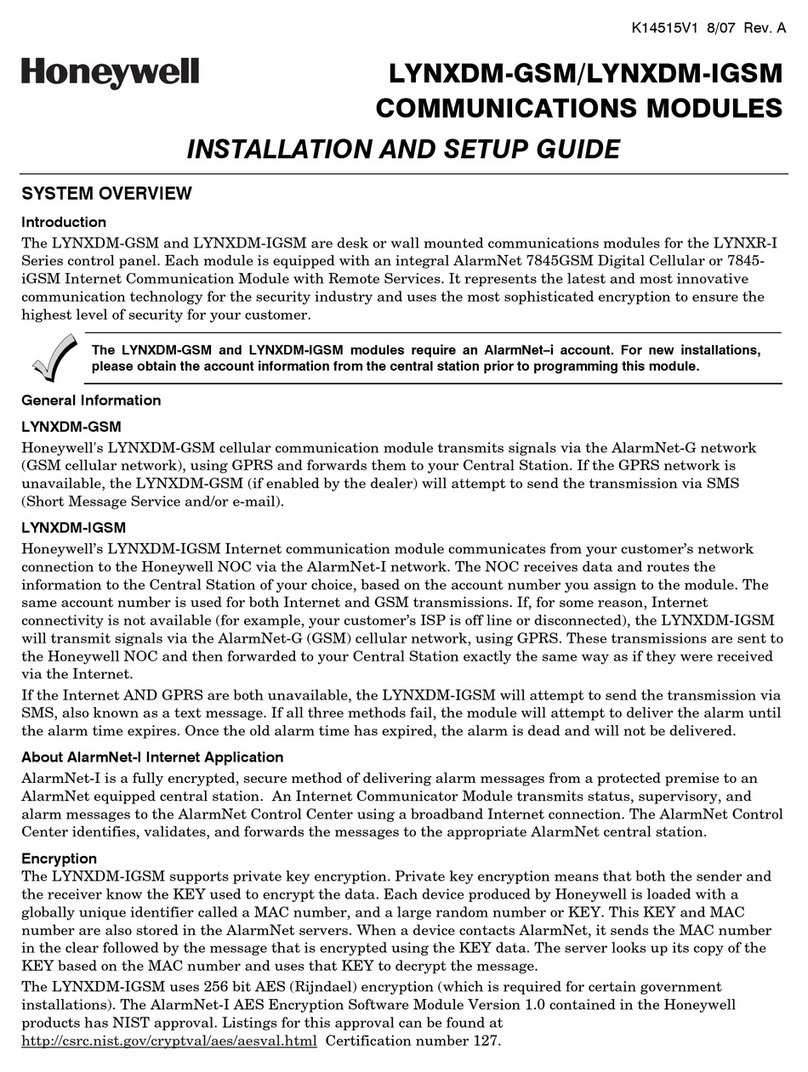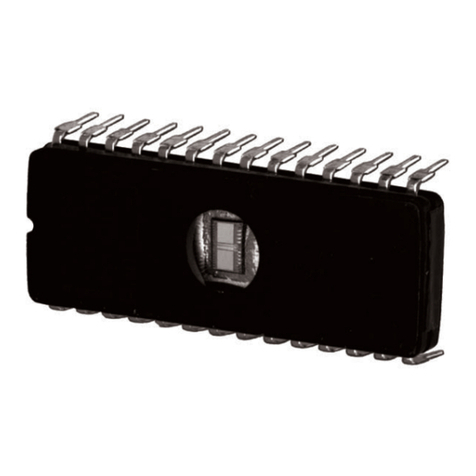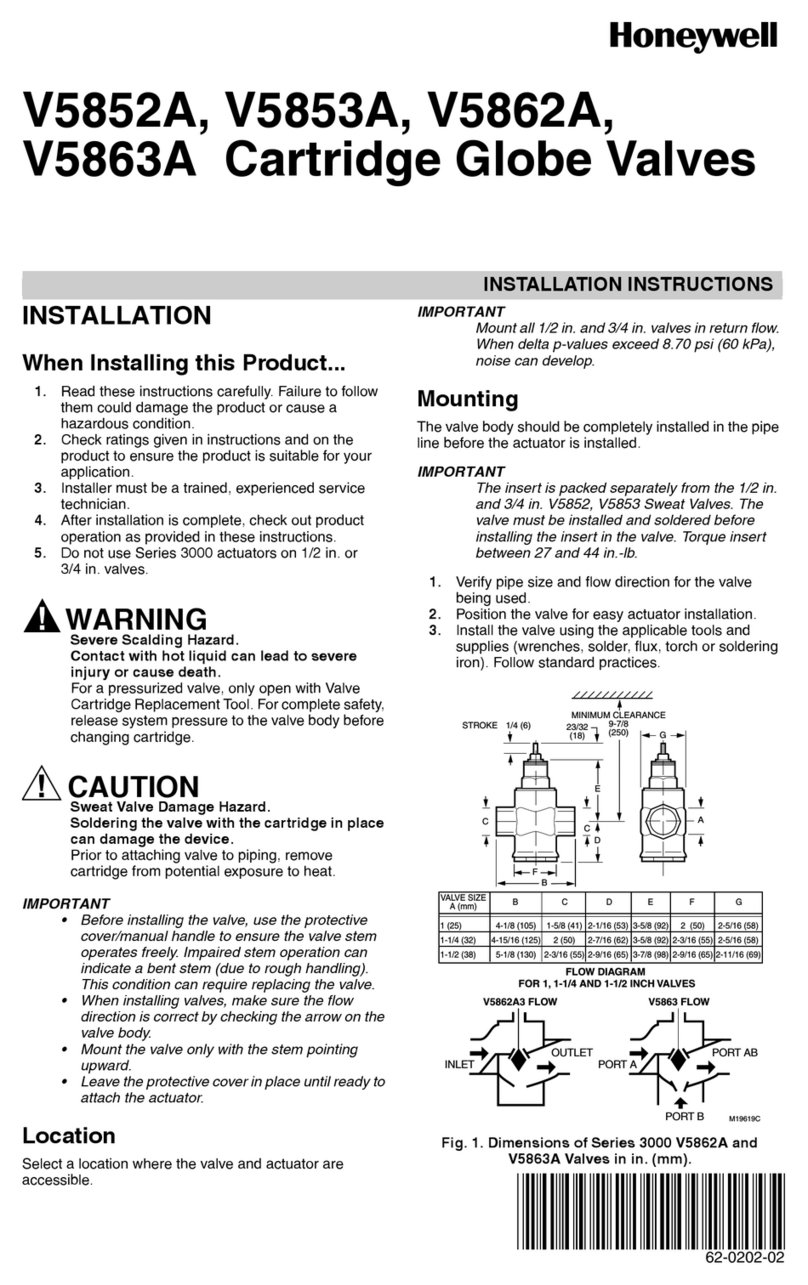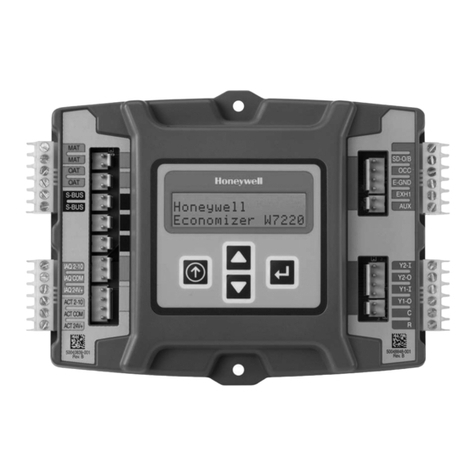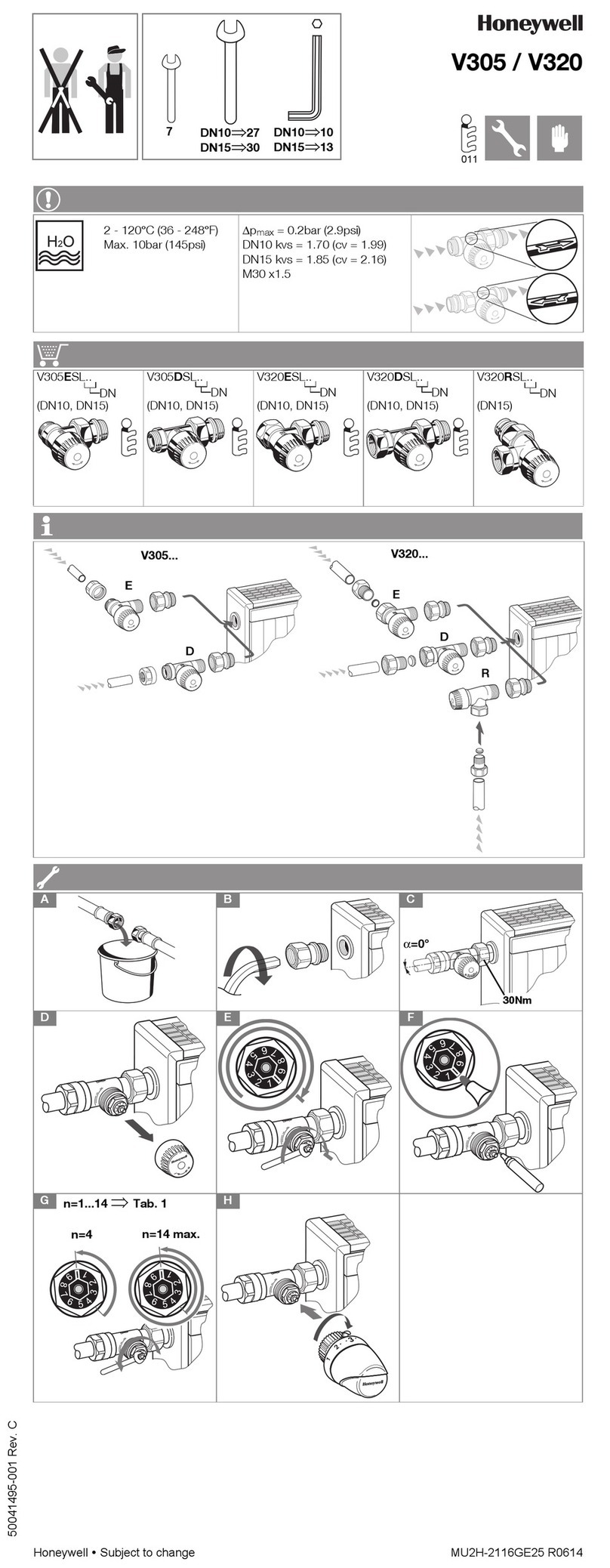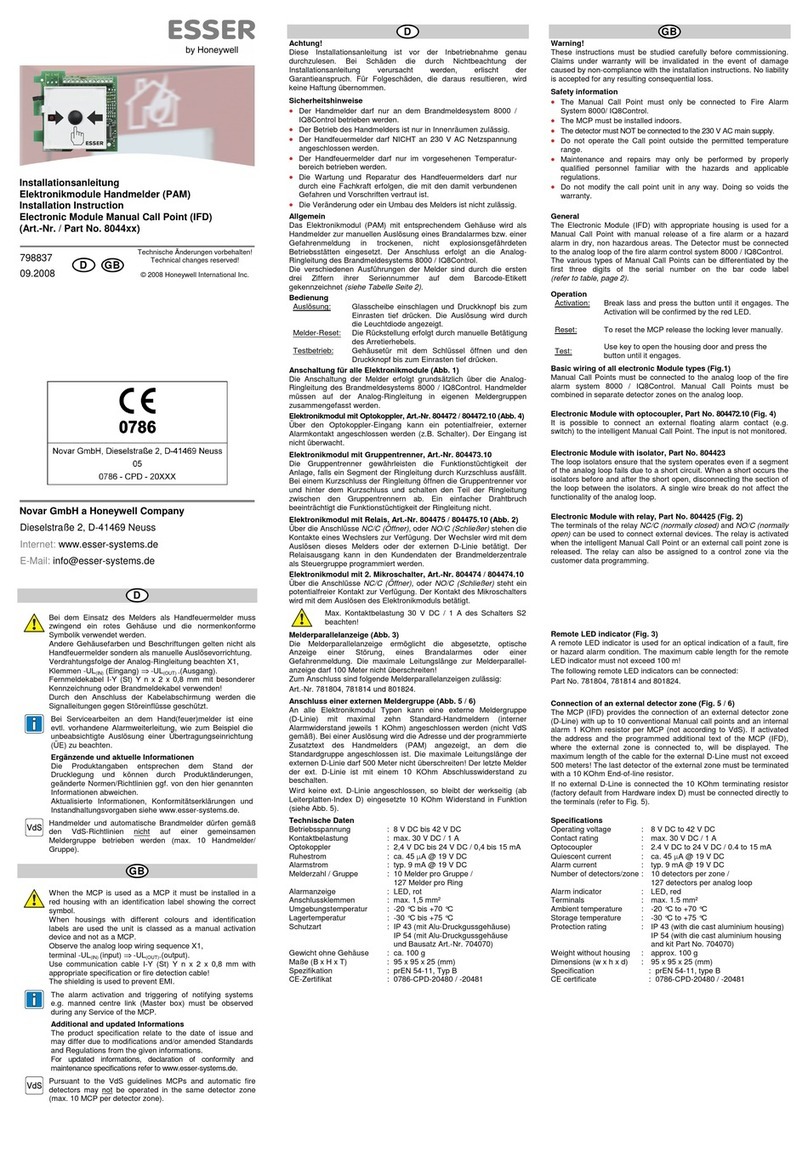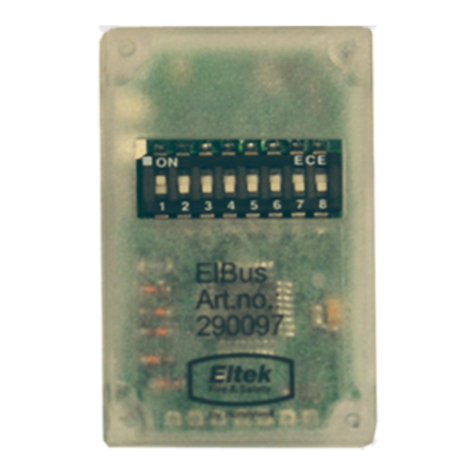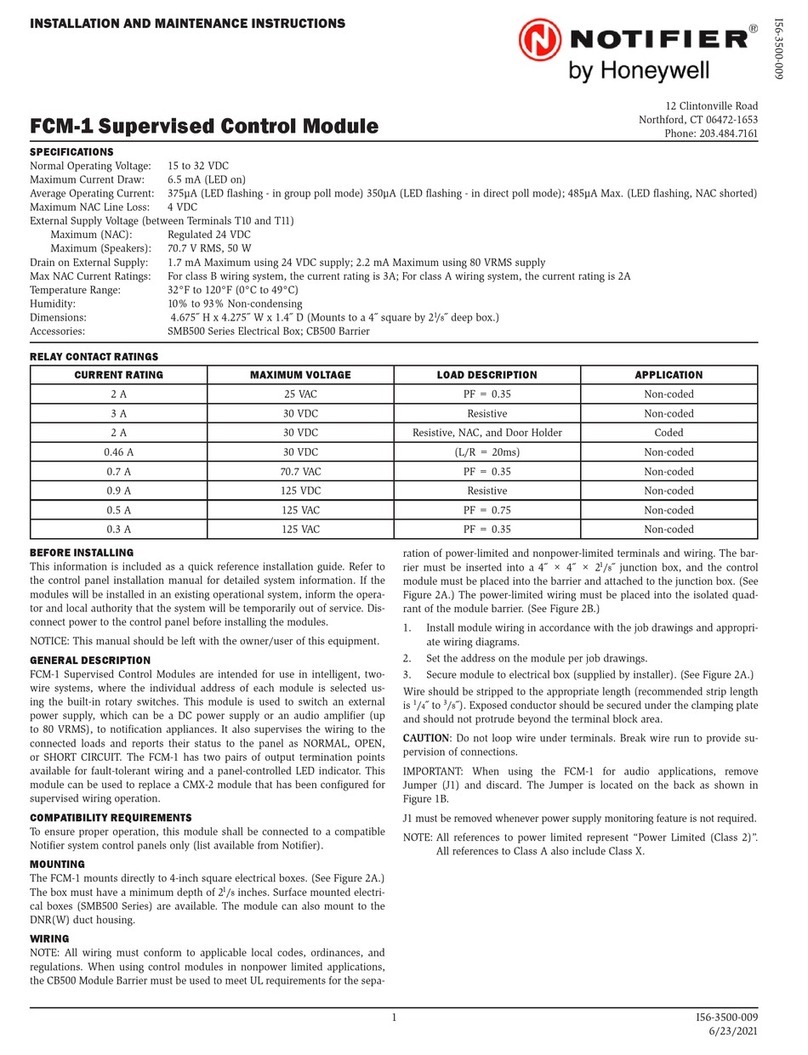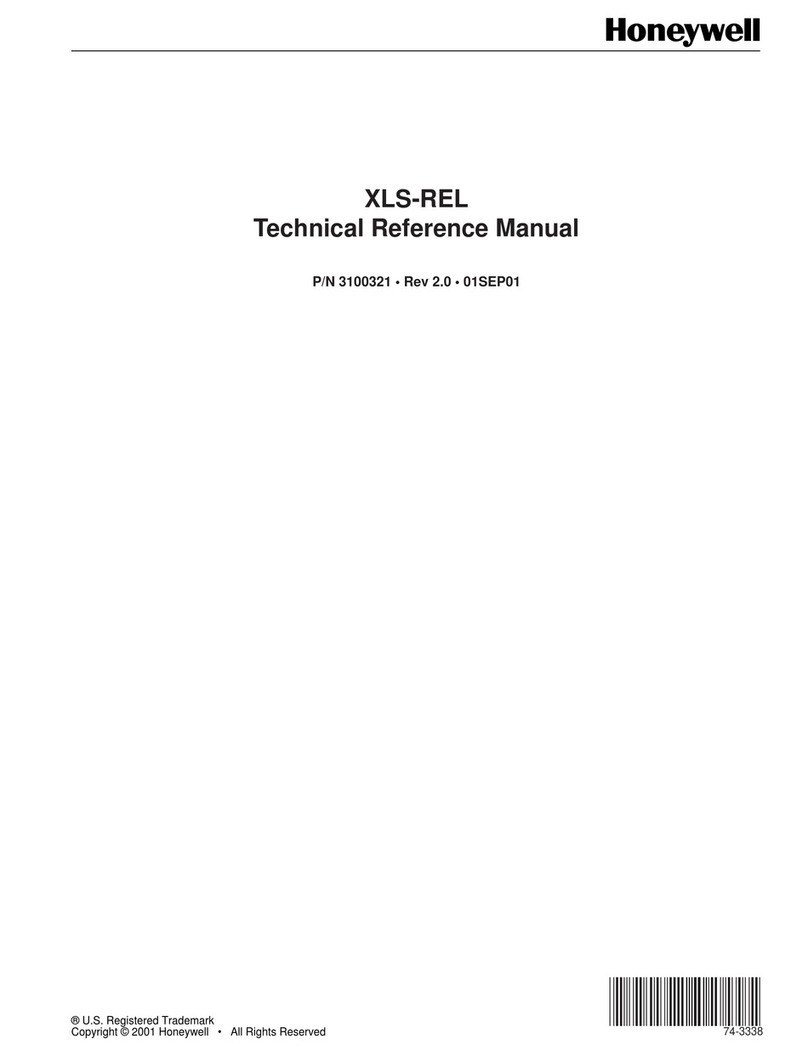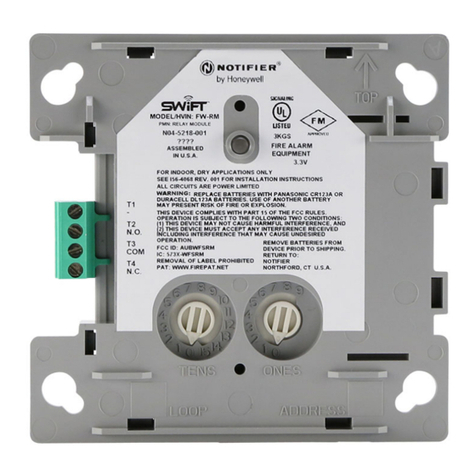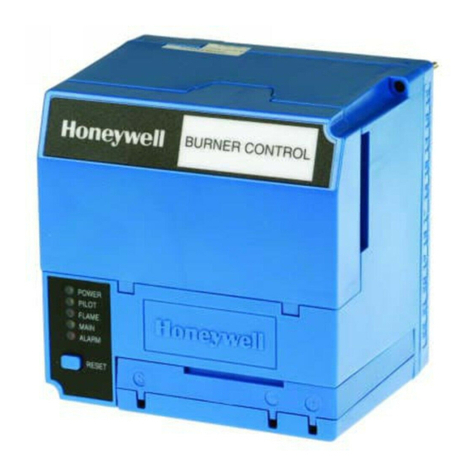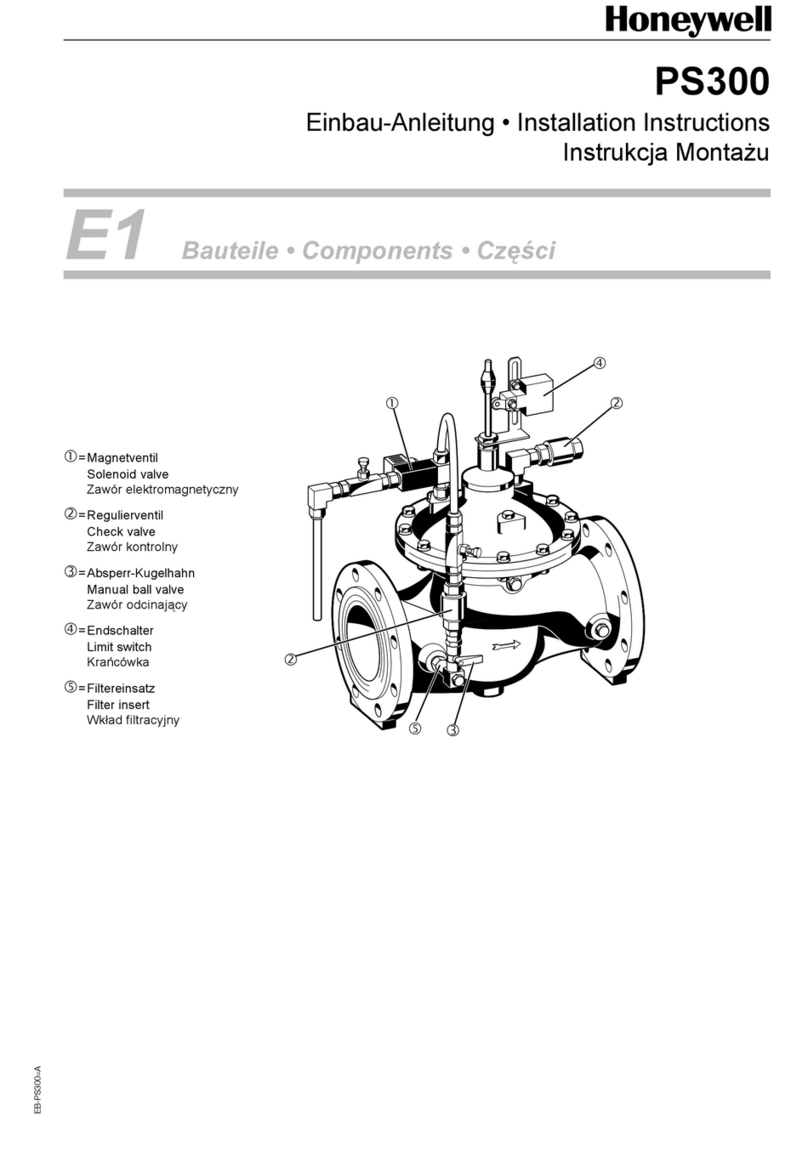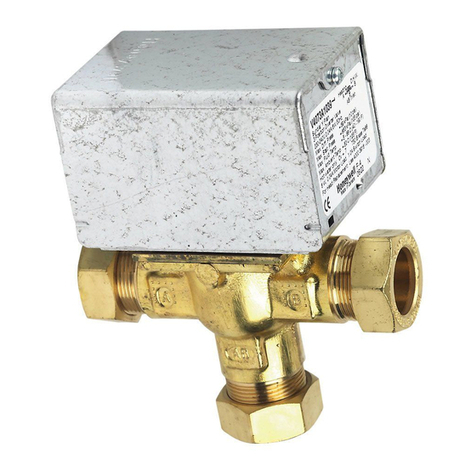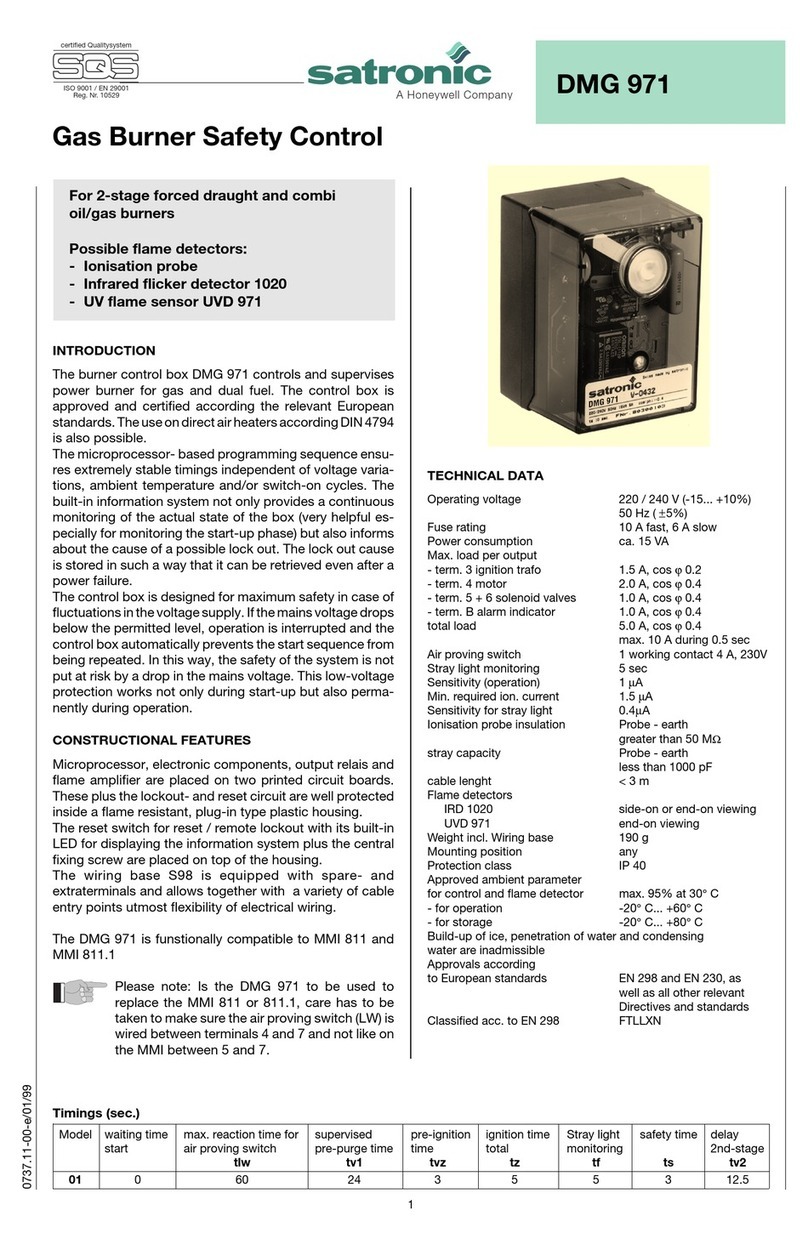
RM7885A
SAFETY PROVISIONS
8
Safety Provisions
INTERNAL HARDWARE STATUS MONITORING
The RM7885A analyzes the integrity of the internal
hardware. The POWER LED will blink every four seconds
to signify an internal hardware check.
CLOSED LOOP LOGIC TEST
The test verifies the integrity of all safety critical loads,
terminals8and9.Iftheloadsarenotenergizedproperly;i.e.,
the main valve terminal is powered during STANDBY, the
RM7885Awill lockout on safety shutdown. The RM7885A
must react to input changes but avoid the occurrence of
nuisance shutdown events. Signal conditioning is applied to
line voltage inputs to verify proper operation in the presence
of normal electrical line noise such as transient high voltage
spikesorshortperiodsoflinedropout.Signalconditioningis
tolerantofsynchronous noise (line noise events that occur at
the same time during each line cycle).
DYNAMIC AMPLI-CHECK™
Dynamic AMPLI-CHECK™ circuitry tests the flame
signal amplifier during burner operation and shuts down the
RM7885A if the flame amplifier fails.
DYNAMIC FLAME AMPLIFIER AND SHUTTER
CHECK
Self-checking circuitry tests all electronic components in
theflamedetectionsystemandamplifier12timesperminute
and shuts down the RM7885A if the detection system fails.
DYNAMIC INPUT CHECK
All system input circuits are examined to assure that the
RM7885A is capable of recognizing the true status of exter-
nal controls, limits and interlocks. If any input fails this test,
a safety shutdown occurs and the fault will be annunciated.
DYNAMIC SAFETY RELAY TEST
Checks the ability of the dynamic safety relay contact to
open and close. Verifies that the safety critical loads, termi-
nals 8 and 9, can be de-energized, as required, by the
Dynamic Self-Check Logic.
DYNAMIC SELF-CHECK SAFETY CIRCUIT
The microcomputer tests itself and related hardware. If a
microcomputer or related hardware failure occurs and does
not allow proper execution of the self-check routine, safety
shutdown occurs and all safety critical loads will be de-
energized.
EXPANDED SAFE-START CHECK
Theconventionalsafe-startcheck,whichpreventsburner
start-upifflameisindicatedatstart-up,isexpandedtoinclude
a flame signal check during STANDBY and a safety critical
load check.
OFF CYCLE (STANDBY) FLAME SIGNAL CHECK
Theflamedetectionsubsystem(flamedetectorandampli-
fier) is monitored during STANDBY. If a flame simulating
conditionor an actual flame exists, asystemhold occurs and
start-up is prevented. If the flame signal exists at any time
after the first 40 seconds of STANDBY, a safety shutdown
occurs and is annunciated. A shutter-check amplifier and
self-checking detector are energized for the first 40 seconds
during STANDBY and the last two seconds before exiting
STANDBY. If a flame exists, a safety shutdown occurs. An
AMPLI-CHECK™ Amplifier is energized continually
through STANDBY to detect any possibility of a runaway
detector or a flame. If a flame exists, a safety shutdown
occurs.Astandardamplifierisenergizedcontinuallythrough
STANDBY. If a flame exists, a safety shutdown occurs.
TAMPER RESISTANT TIMING AND LOGIC
Safety and logic timings are inaccessible and cannot be
altered or defeated.
FIRST-OUT ANNUNCIATION AND SELF-DIAG-
NOSTICS
Sequence Status Lights (LEDs) provide positive visual
indication of the program sequence: POWER, PILOT,
FLAME, MAIN and ALARM. The green POWER LED
blinks every four seconds, signifying that the RM7885A
hardware is running correctly.
OptionalMulti-FunctionKeyboardDisplayModuleshows
elapsed time during PILOT IGN. As an additional trouble-
shooting aid, it provides diagnostic information, historical
information and expanded annunciator information that is
availableduringnormaloperationorwhenasafetyshutdown
or hold occurs.
First-out Annunciation reports the cause of a safety shut-
downoridentifiesthecauseofafailuretostartorcontinuethe
burner control sequence with an English text and numbered
codevia theoptional KeyboardDisplayModule. Itmonitors
all field input circuits, including the flame signal amplifier.
Thesystemdistinguishes33modesoffailureanddetectsand
annunciates difficult-to-find intermittent failures.
Self-Diagnostics add to the first-out annunciation by
allowing the RM7885A to distinguish between field (exter-
nal device) and internal (system related) problems. Faults
associatedwithintheflamedetectionsubsystemorRM7885A
are isolated and reported by the optional Keyboard Display
Module. See the 7800 SERIES System Annunciation Diag-
nostics and Troubleshooting, form 65-0118.
